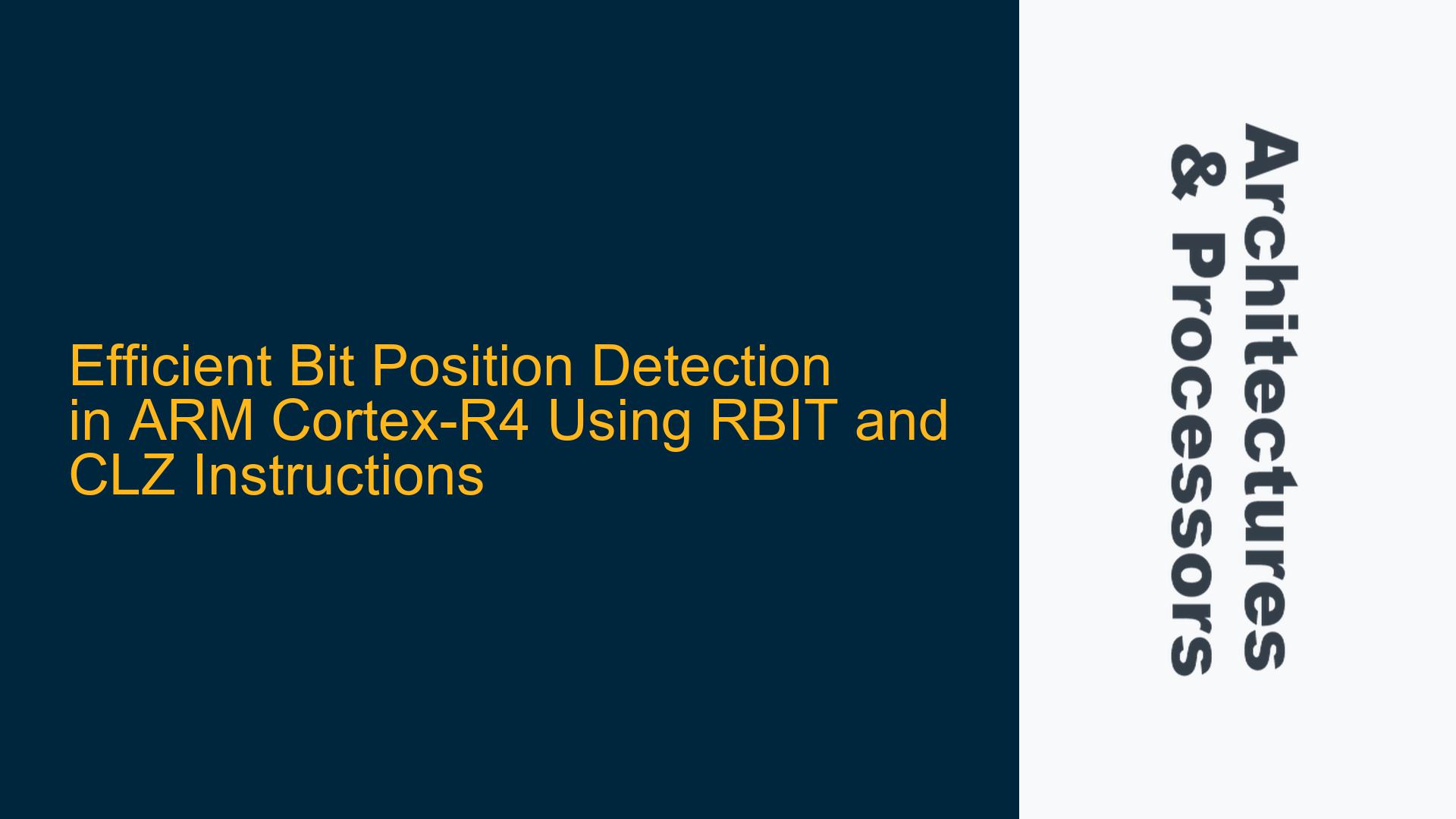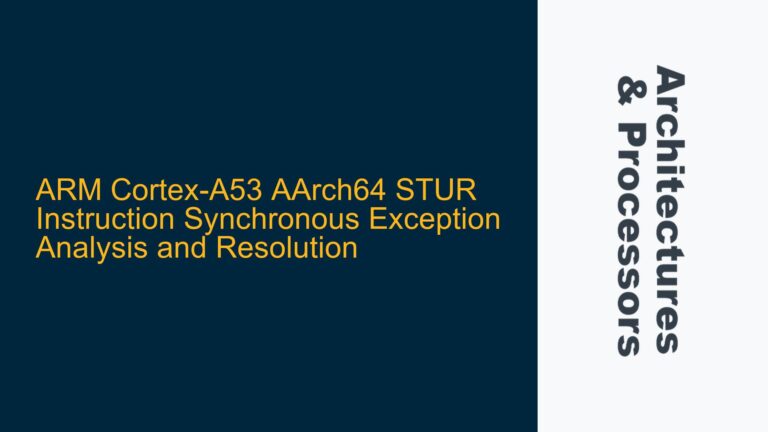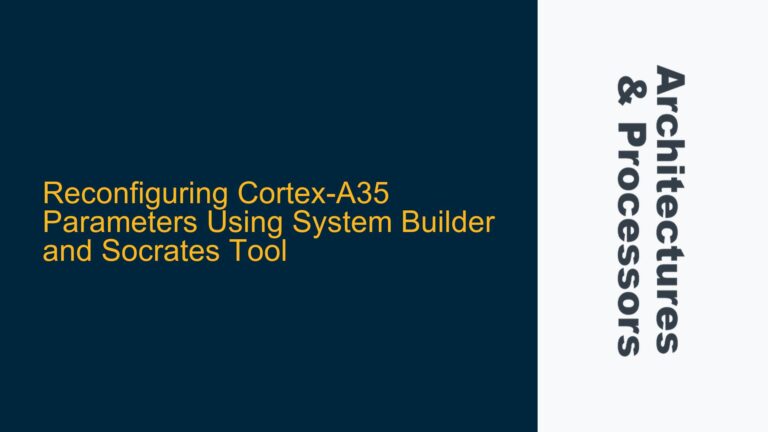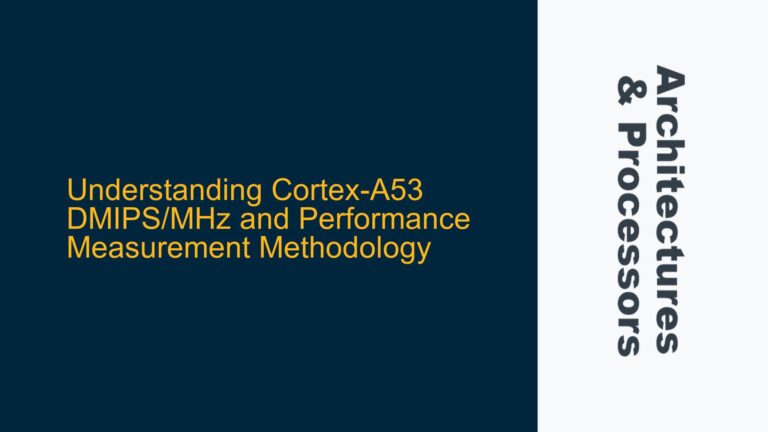ARM Cortex-R4 Bit Position Detection Requirements
The ARM Cortex-R4 processor, like many embedded systems, often requires efficient bit manipulation to determine the position of the first set bit in a 32-bit unsigned integer. This operation is crucial in various applications, such as memory management, peripheral control, and real-time signal processing. The requirement is to identify the position of the first set bit (starting from the least significant bit, LSB) in a 32-bit value, where the position is indexed from 0 to 31. For example, if the input value is 0x00000004, the expected output is 2, as the third bit (index 2) is set. Similarly, for 0x80000001, the output should be 31, as the most significant bit (MSB) is set.
The challenge lies in achieving this efficiently without resorting to iterative or branching logic, which can be computationally expensive and time-consuming, especially in real-time systems. The ARM Cortex-R4 architecture, being a high-performance embedded processor, provides specific instructions that can be leveraged to perform this operation in a deterministic and efficient manner.
RBIT and CLZ Instructions for Bit Position Detection
The ARM Cortex-R4 architecture includes two powerful instructions that can be combined to achieve efficient bit position detection: RBIT (Reverse Bit Order) and CLZ (Count Leading Zeros). These instructions are part of the ARMv7-R instruction set and are designed to handle bit manipulation tasks with minimal overhead.
The RBIT instruction reverses the bit order of a 32-bit register. For example, if the input value is 0x00000001 (binary 0000...0001), the RBIT instruction will transform it into 0x80000000 (binary 1000...0000). This operation effectively shifts the least significant bit (LSB) to the most significant bit (MSB) position, and vice versa.
The CLZ instruction counts the number of leading zeros in a 32-bit register. For example, if the input value is 0x80000000 (binary 1000...0000), the CLZ instruction will return 0, as there are no leading zeros. If the input value is 0x00000001 (binary 0000...0001), the CLZ instruction will return 31, as there are 31 leading zeros before the first set bit.
By combining these two instructions, we can efficiently determine the position of the first set bit in a 32-bit value. The process involves first reversing the bit order of the input value using the RBIT instruction and then counting the leading zeros in the reversed value using the CLZ instruction. The result of the CLZ instruction directly corresponds to the position of the first set bit in the original input value.
For example, consider the input value 0x00000004 (binary 0000...0100). Applying the RBIT instruction to this value results in 0x20000000 (binary 0010...0000). Applying the CLZ instruction to this reversed value yields 2, which is the position of the first set bit in the original input value.
Implementing Bit Position Detection Using Intrinsic Functions
For developers using the ARM Compiler, the RBIT and CLZ instructions can be accessed through intrinsic functions, which provide a high-level interface to these low-level instructions. The intrinsic functions __rbit() and __clz() are available in the ARM Compiler and can be used to perform the bit position detection operation in a concise and readable manner.
The __rbit() intrinsic function takes a 32-bit unsigned integer as input and returns the value with its bit order reversed. The __clz() intrinsic function takes a 32-bit unsigned integer as input and returns the number of leading zeros in the value. By combining these two functions, we can implement the bit position detection operation as follows:
uint32_t bit_position = __clz(__rbit(input_value));
In this code snippet, input_value is the 32-bit unsigned integer for which we want to determine the position of the first set bit. The __rbit() function reverses the bit order of input_value, and the __clz() function counts the leading zeros in the reversed value. The result, stored in bit_position, is the position of the first set bit in the original input_value.
For example, if input_value is 0x00000004, the __rbit() function will return 0x20000000, and the __clz() function will return 2, which is the position of the first set bit in the original value.
Performance Considerations
The combination of the RBIT and CLZ instructions provides a highly efficient solution for bit position detection on the ARM Cortex-R4 processor. Both instructions are executed in a single cycle, making this approach significantly faster than iterative or branching methods. Additionally, the use of intrinsic functions ensures that the code is optimized by the compiler, further enhancing performance.
However, it is important to note that the RBIT and CLZ instructions are specific to the ARM architecture and may not be available on other processor families. For developers working with multiple architectures, it may be necessary to implement alternative methods for bit position detection, such as lookup tables or software-based bit scanning algorithms.
Example Code
Below is a complete example of how to implement bit position detection using the RBIT and CLZ intrinsic functions in an ARM Cortex-R4 application:
#include <stdint.h>
#include <arm_acle.h> // Include ARM ACLE (Architecture Compatibility Layer Extensions)
uint32_t get_first_set_bit_position(uint32_t input_value) {
// Reverse the bit order of the input value
uint32_t reversed_value = __rbit(input_value);
// Count the leading zeros in the reversed value
uint32_t bit_position = __clz(reversed_value);
// Return the position of the first set bit
return bit_position;
}
int main() {
uint32_t test_value = 0x00000004; // Example input value
uint32_t position = get_first_set_bit_position(test_value);
// Output the result (position should be 2 for this example)
printf("The position of the first set bit is: %u\n", position);
return 0;
}
In this example, the get_first_set_bit_position() function takes a 32-bit unsigned integer as input and returns the position of the first set bit. The main() function demonstrates how to use this function with an example input value.
Conclusion
The ARM Cortex-R4 processor provides powerful instructions for efficient bit manipulation, including the RBIT and CLZ instructions. By combining these instructions, developers can implement a highly efficient solution for detecting the position of the first set bit in a 32-bit unsigned integer. The use of intrinsic functions in the ARM Compiler further simplifies the implementation and ensures optimal performance. This approach is particularly well-suited for real-time embedded systems where performance and determinism are critical.
For developers working with the ARM Cortex-R4 or other ARM processors that support the RBIT and CLZ instructions, this method offers a robust and efficient solution for bit position detection. However, it is important to consider the specific requirements and constraints of the target application, as well as the availability of these instructions on other processor architectures.






